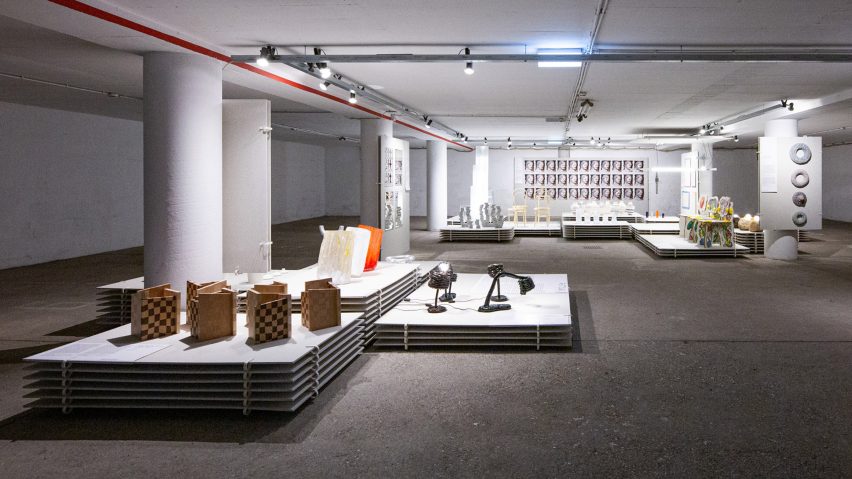
Inflated 3D-printed clocks and molten-wax lamps feature in Vienna Design Week exhibition
Hidden away in the basement of this year's Vienna Design Week headquarters, The Series exhibition collated works by 22 independent designers from 14 countries to explore the idiosyncrasies of small-batch production.
The group show saw each studio contribute a family of objects made using the same processes and materials but with subtly different outcomes.
In this way, the exhibition hoped to encapsulate the working processes of young up-and-coming designers, who are making products in limited runs in their own studios and often selling them directly to consumers.
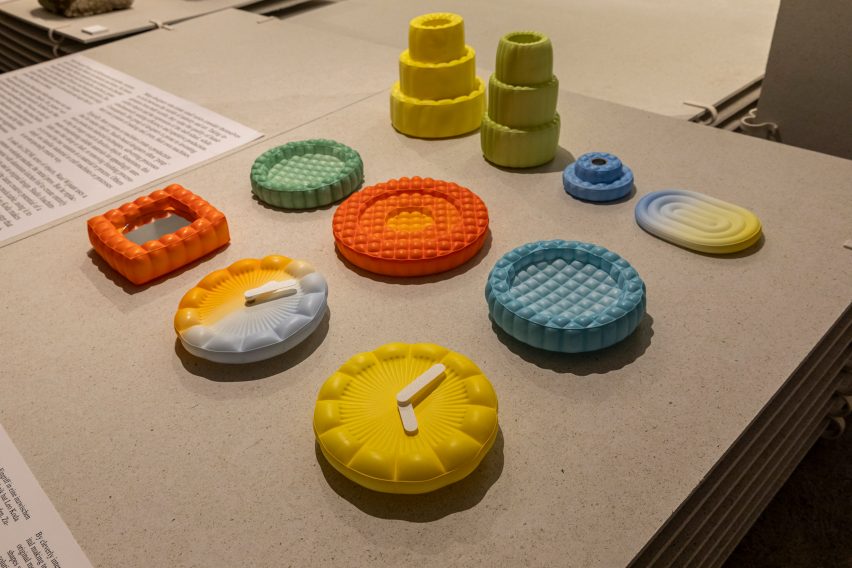
"This type of small-scale making has come to define a generation of emerging designers," curator Laura Houseley said. "Yet rarely is it recognised as the consequential system it is."
"The whole process is about balancing the efficiency of a production line with the covetability of a unique work," she told Dezeen.
"Most often these works are judged by their expression and creativity but we don't often reflect on how the need and desire to make multiple objects has impacted what the final object is, its making, its materiality, its final form."
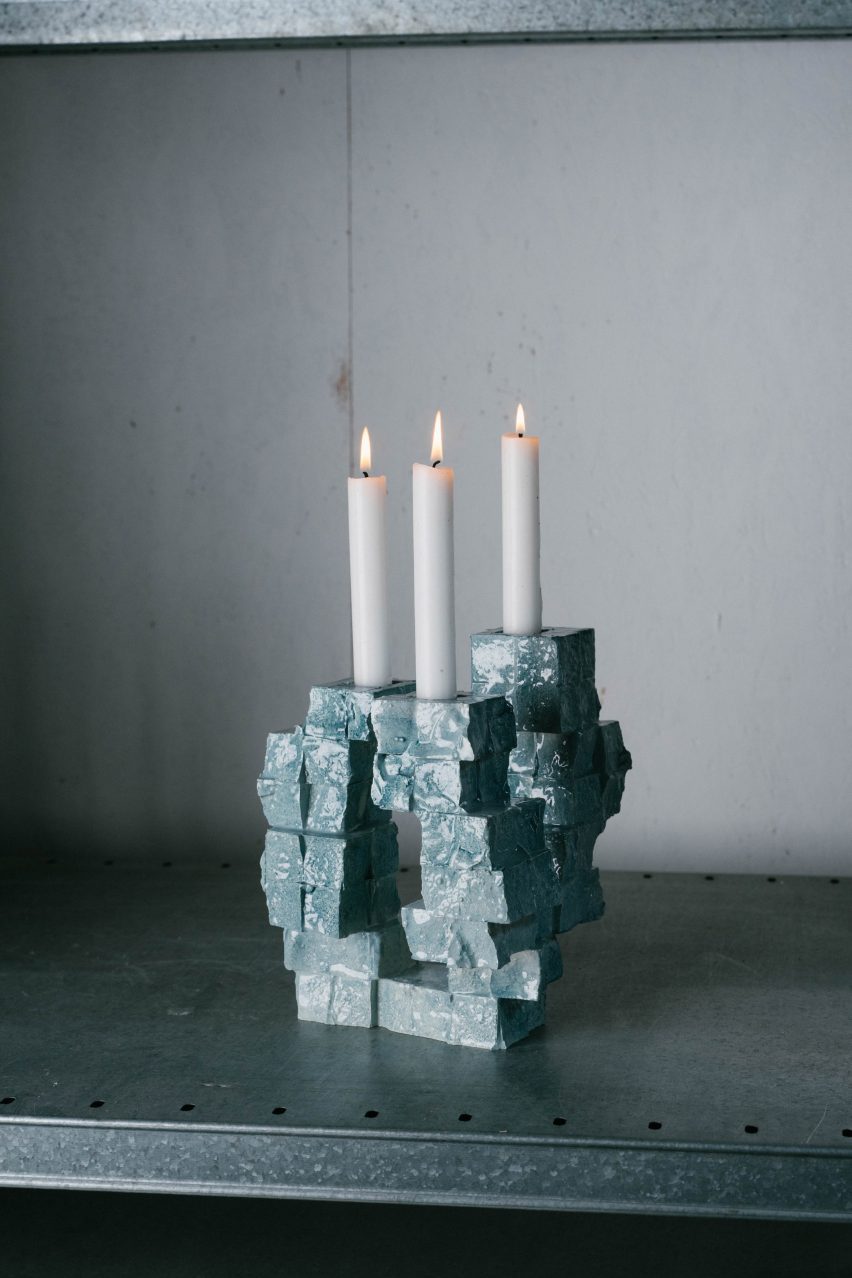
The exhibition was broken down into three sections – nature, waste and system – focused on how designers are manipulating these different variables to create unique yet replicable objects.
The system section highlighted designers who have hacked industrial production processes to create collectible design pieces.
Among the featured designs were homeware ranges by four different Design Academy Eindhoven graduates.
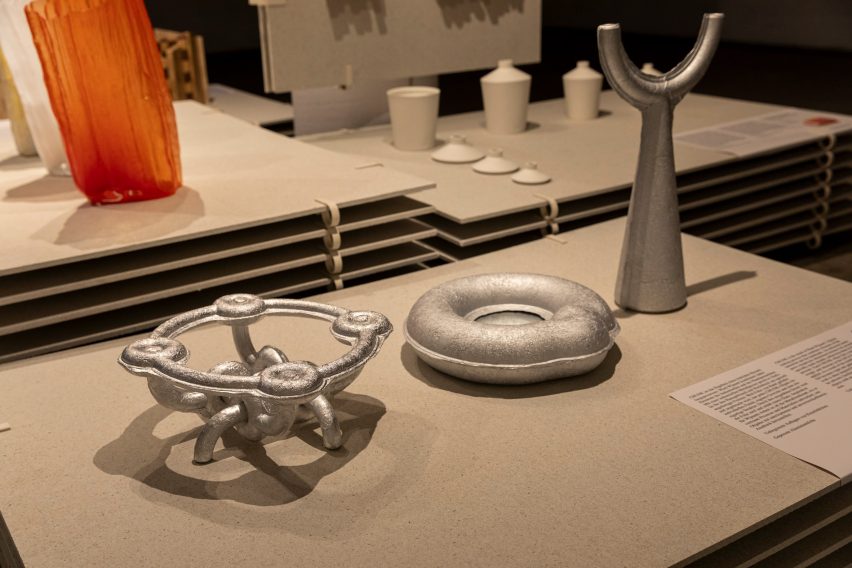
Ward Wijnant placed aluminium kitchen foil into a traditional metal press to form a candleholder, basket and mirror, while Moon Seop Seo formed five different ceramic candleholders by reusing the same modular plaster blocks to create pixellated moulds.
Another family of products, by Leo Koda, was 3D-printed first as flat shapes, much like a sewing pattern. They were then boiled in hot water mixed with dye, causing them to blow up and take on different colours.
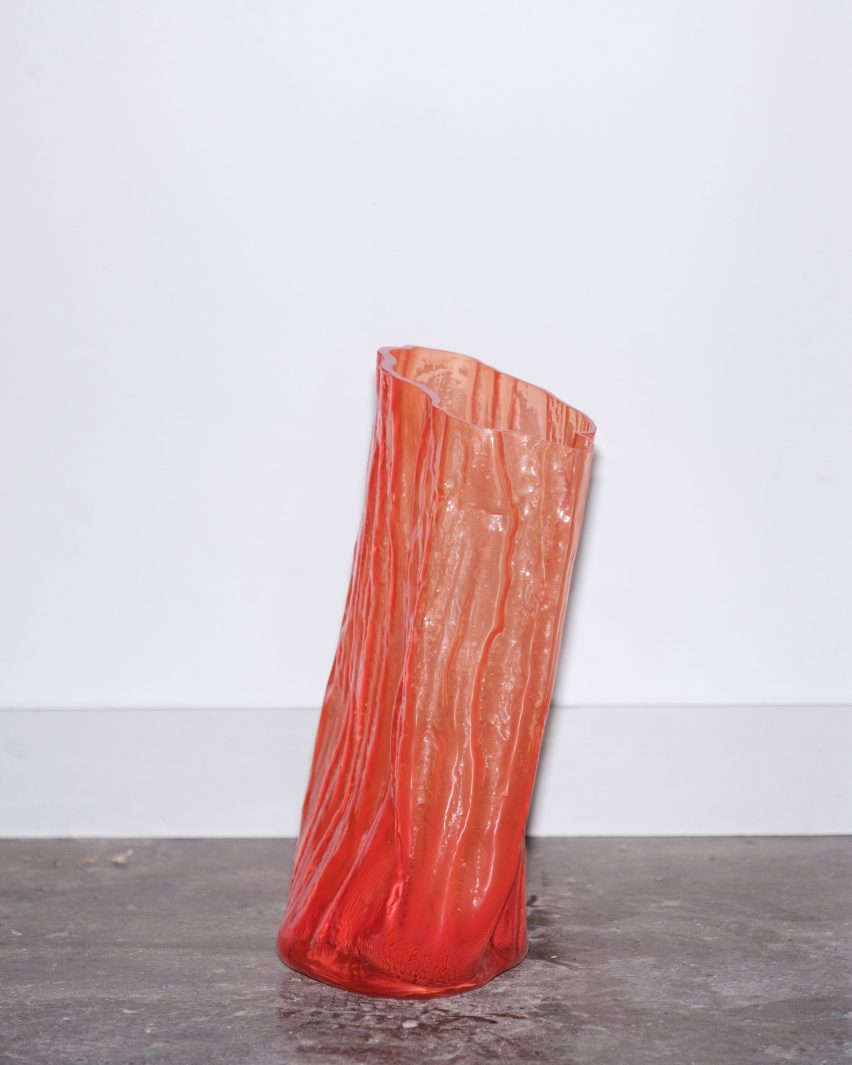
Featured in the nature section were objects that allow the unpredictability of nature and natural materials to dictate their final form.
Belgian designer Nicolas Erauw created a series of lamps by dripping metal frames into molten wax and solidifying the resulting formings using epoxy resin.
And Swedish studio Lab La Bla showed three glass vases that were hand-blown into a tree trunk hollowed out by decay, deforming and burning up part of the wood each time to produce slightly different results.
The waste section of the exhibition looked at how financial constraints, as well as environmental concerns, are increasingly pushing young designers to work with abundant local waste instead of virgin materials.
German designer Heiko Bauer crafted two industrial-looking shelves from abandoned shopping cars, while Swiss studio Office for Ordinary Objects designed a trio of floor lights using waste construction materials, with corrugated polycarbonate roofing sheets forming their translucent shades.
Similarly, Austrian designer Jakob Niemann created an homage to the classic Viennese coffee house chair, Thonet's No 14, made from offcut acacia branches.
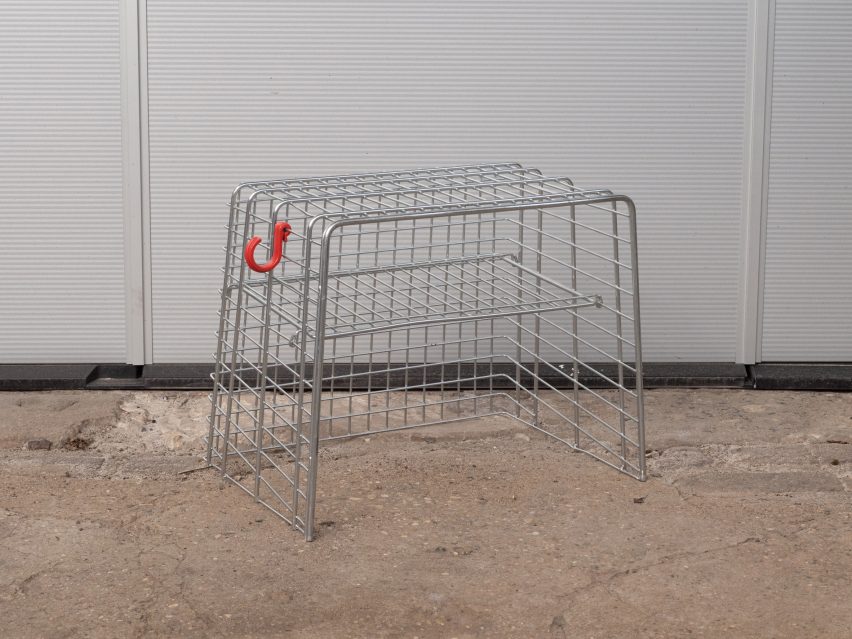
"We spent a lot of time and energy and thought on the exhibition," said Vienna Design Week director Gabriel Roland.
"It's about a more intimate relationship to the object," he added. "And about how designers make use of the variations within the production of a series."
"So they are small series of objects that obviously belong together, that have been made with the same system, with the same approach but that are varied within themselves by design, by accident, by nature."
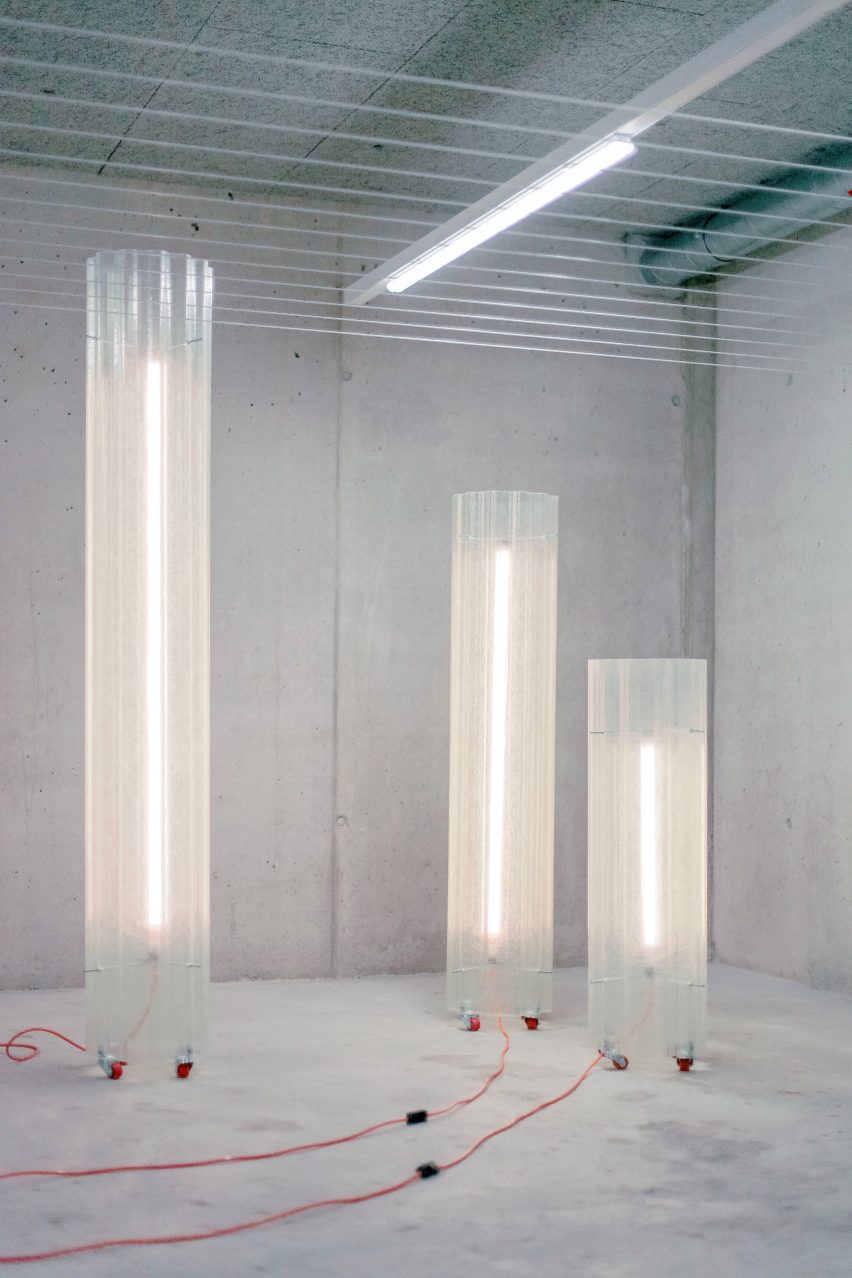
Also included in the exhibition were works by Alexandra Gerber, Alexandre Delasalle, Anna Nordström, Erika Emerén, Fabio Spink, Jesper Oléhn, Johanna Seelemann, Kuo Duo, Liam McClure, Roxanne Kury, Sarah Yao-Rishea, Studio Joachim-Morineau, Thomas Waidhofer and Victor Montour.
The Line is the second edition of Vienna Design Week's Fokus exhibition, which hopes to provide an accessible, affordable platform for young international talent to show in the Austrian capital.
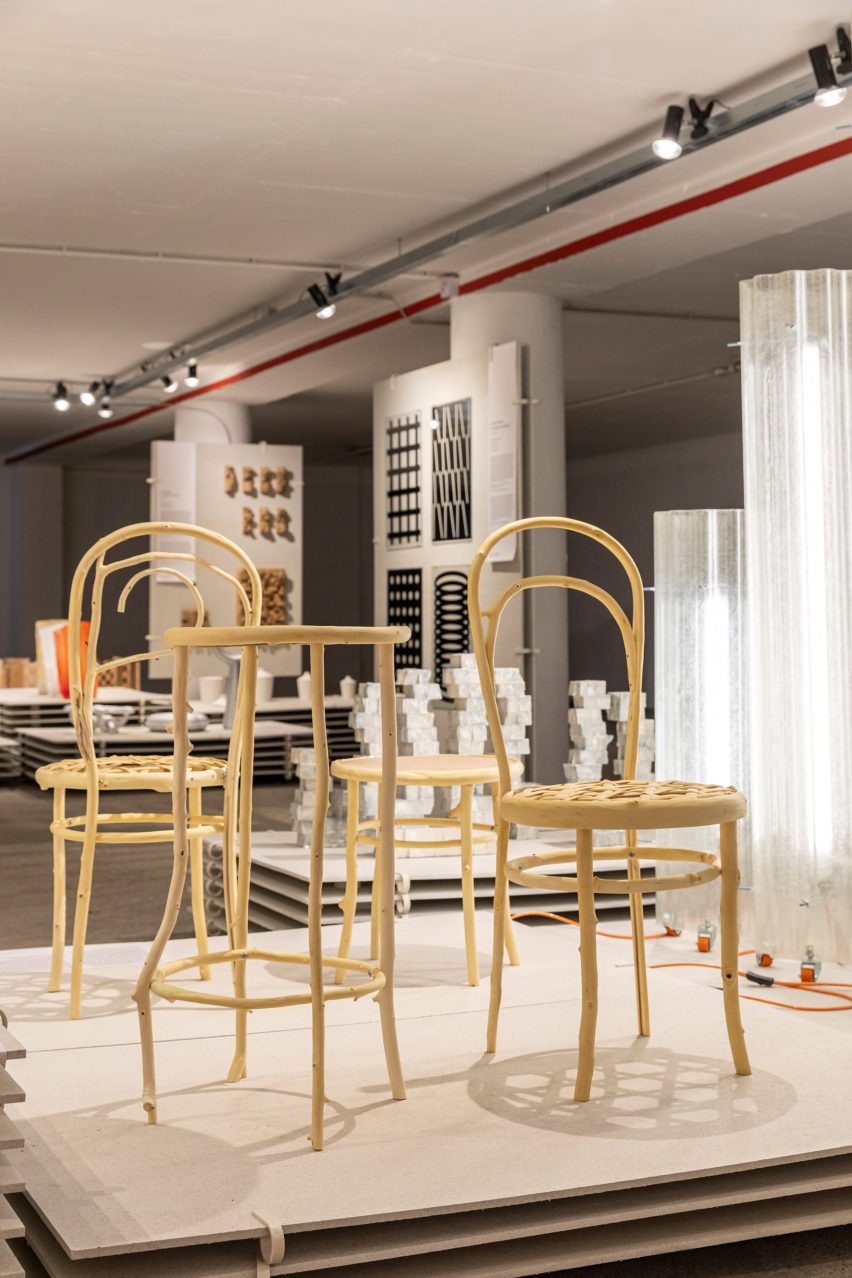
The exhibition took over the basement of this year's temporary festival headquarters – a former hotel run by refugees that is now set for redevelopment.
Notable projects from previous editions of Vienna Design Week include a collection of homeware made from industrial and personal food waste by design studio Barbara Gollackner and post-apocalyptic food made from lichen by designer Julia Schwarz.
The Series was on display as part of Vienna Design Week from 22 September to 1 October. See Dezeen Events Guide for all the latest information you need to know to attend the event, as well as a list of other architecture and design events taking place around the world.